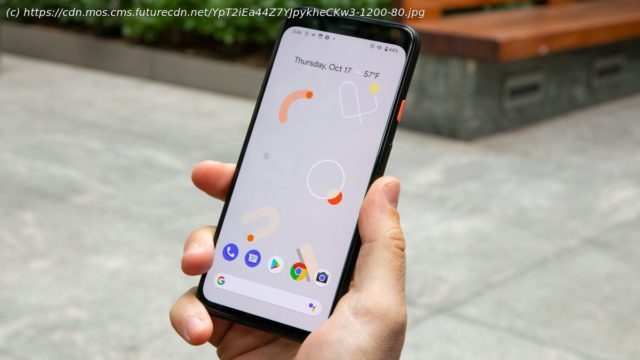Google focuses on camera upgrades for the Pixel 4, playing it remarkably safe elsewhere.
The Pixel 4 is Google’s latest attempt (alongside the Google Pixel 4 XL) at making a phone that shows off the very best of Android and offers up a cocktail of flagship photography features, including machine learning and other AI wizardry. It’s undeniably one of the very best camera phones you can buy right now, taking on that mantle from Google Pixel 3, but the upgrades are minimal elsewhere. Google hasn’t tried to break the mold with the Pixel 4, instead playing things safe with an incremental update. But with the less powerful and more affordable Google Pixel 5 officially unveiled, the Pixel 4 stands as the tech giant’s last stab at a pricey phone to compete spec-for-spec with top-tier flagships. That means you’ll likely be able to pick up a Pixel 4 at a lower price, especially on Amazon Prime Day on October 13-14 and Black Friday later in November. These deals seasons typically see retailers and carriers offloading older phones, and we may see some great Pixel 4 discounts. The Pixel 4 remains novel amid smartphones, as it’s a compact device that offers a unique design you won’t see in other flagships. This uniqueness comes from its appearance, the materials it uses, and the fact that it’s smaller than a lot of other top-end devices, which can sometimes be a little on the large side for the average user. Google has boosted the screen with a 90Hz refresh rate that offers a smoother experience when scrolling through social media or playing video games, and there’s plenty of power on tap, with a recent chipset paired with 6GB of RAM. One area where you’ll likely find the Pixel 4 frustrating is its battery life, which at best is mediocre and at worst can be infuriatingly quick to drain. This radar technology is called Soli, and it’s designed to identify where you are in order to predict when you’ll reach for your phone, so that the screen is on, and ready and waiting for you. It’s an interesting idea, but so far it’s limited. The good news is that the Pixel 4’s starting price is lower than that of the Pixel 3 in some countries, which could help to compensate for any perceived lack of overall innovation on Google’s part. The Google Pixel 4 was announced in early October 2019, and it was then put on sale on October 24 that same year. You can easily buy this device in the US, UK, Australia and a variety of other markets around the world. For the first time, a Pixel phone is on sale at all major carriers in the US as often Google’s phones are just available on Verizon. The Pixel 4 is also available on AT&T, Sprint, T-Mobile, Xfinity, Spectrum and Google Fi. In the UK it’s available through Vodafone, EE, O2 and Three, as well as a selection of other smaller providers. It’s also available in Australia, where it’s available on Telstra, Vodafone, Optus and other carriers. If you want to buy the phone outright the Google Pixel 4 price started at $799 / £669 / AU$1,049 for the 64GB of storage model, while the 128GB Pixel 4 is $899 / £769 / AU$1,199. Certain markets can only access some models though – for example, in the UK the orange variant is only available in 64GB, while both 64GB and 128GB are available in the US. This all means the Pixel 4 has the same launch price as the Pixel 3 had in the US, while in the UK and Australia the new handsets actually have a lower launch price than their predecessors. It’s unclear why it’s cheaper in those two markets and not the US, but it’s a nice bonus if you’re interested in this phone. If you find this price too expensive, you may be interested in the Google Pixel 4a that is rumored to be launching in the first half of 2020 and should offer a similar experience for a much lower price. While there’s not a whole lot that’s new about the Pixel 4 compared to the Pixel 3, the design has been significantly updated. It immediately feels like a different device, especially if you opt for one of the matte finishes. The handset has an aluminum frame which runs round the circumference of the device providing a solid structure, finished with a rubberized black coating. Initially this feels a little odd to the touch. We’re used to the cool, premium feel of metal or glass when we pick up a flagship smartphone these days, and the duller finish on the sides of the Pixel 4 doesn’t ooze the same high-end appeal. However, after a couple of minutes of handling the Pixel 4 the finish starts to make more sense. It provides an awful lot of grip compared to all-glass/metal rivals, and allows the phone to sit comfortably in the hand. It won’t be to everyone’s taste, as it doesn’t feel as premium as most other high-end devices on the market, but it does offer a more secure grip on the phone, and it’s something we grew to like more and more throughout our time with the phone. The rear of the phone is made of glass, but certain colors have different finishes. The Oh So Orange variant of the phone that we’ve been using for our review has an odd, ceramic finish, but it’s something we grew to like more and more over time too. The Clearly White version also has the same rear design. If you opt for the glossy Just Black variant (yes, those are the official names from Google) you’ll find the rear of the phone has a more traditional glass-like feel to it. With its 5.7-inch display, the Pixel 4 is one of the smaller flagship devices around, and will thus be usable one-handed for many, with the extra grip on the sides helping it to feel secure. The Pixel 4 measures 147.1 x 68.8 x 8.2mm and weighs 162g. It’s not a ‘compact’ device – those with smaller palms may still need to employ both hands to comfortably use the Pixel 4 – but it’s certainly easier to use one-handed than its larger sibling. The display takes up most of the front of the phone, but there’s still a bezel above and a smaller, but still noticeable, chin below, with Google once again opting not to use a notch on its standard flagship model (the Pixel 3 XL did sport a notch, but for the Pixel 4 XL Google has reverted to a bezeled design). It’s an odd choice that we don’t particularly appreciate, as it cuts into the amount of display that’s on offer. It’s particularly noticeable when you’re watching video, as it makes the black bars at the side of what you’re watching lopsided with a particularly thick area of black on one side. On the right side of the phone you’ll find the power and volume buttons, with the former flaunting a contrasting color to the black trim of the Pixel 4 for a little visual interest. We found the people noticed this, and it adds to the phone’s distinct look. There’s also a change on the rear, with a large, square camera block sitting in the top-left corner – it’s a similar aesthetic to that of the new iPhone 11 series. This sits out from the phone a few millimeters, but we didn’t find it uncomfortable when the phone was in a pocket, and it didn’t cause any issues when it was laying flat on a desk. It’s not an especially stylish implementation, but it has allowed Google to group two cameras (the first time it’s included a second snapper on the rear of a phone), the flash and sensors into one area. The Pixel 4 has stereo speakers, which we found to work well but which don’t offer anything groundbreaking in the world of smartphone audio. The phone can survive a short submersion in water thanks to its IP68 water resistance rating, which we tested by dunking it in a park fountain without issue.






